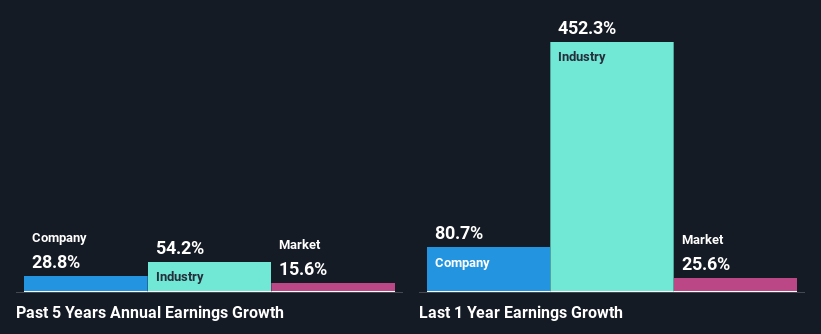Declining Stock and Solid Fundamentals: Is The Market Wrong About Algoma Central Corporation (TSE:ALC)?
With its stock down 6.8% over the past three months, it is easy to disregard Algoma Central (TSE:ALC). But if you pay close attention, you might gather that its strong financials could mean that the stock could potentially see an increase in value in the long-term, given how markets usually reward companies with good financial health. In this article, we decided to focus on Algoma Central's ROE.
Return on equity or ROE is a key measure used to assess how efficiently a company's management is utilizing the company's capital. In short, ROE shows the profit each dollar generates with respect to its shareholder investments.
Check out our latest analysis for Algoma Central
How Is ROE Calculated?
ROE can be calculated by using the formula:
Return on Equity = Net Profit (from continuing operations) ÷ Shareholders' Equity
So, based on the above formula, the ROE for Algoma Central is:
14% = CA$85m ÷ CA$619m (Based on the trailing twelve months to March 2022).
The 'return' is the profit over the last twelve months. That means that for every CA$1 worth of shareholders' equity, the company generated CA$0.14 in profit.
What Has ROE Got To Do With Earnings Growth?
So far, we've learned that ROE is a measure of a company's profitability. Based on how much of its profits the company chooses to reinvest or "retain", we are then able to evaluate a company's future ability to generate profits. Assuming all else is equal, companies that have both a higher return on equity and higher profit retention are usually the ones that have a higher growth rate when compared to companies that don't have the same features.
Algoma Central's Earnings Growth And 14% ROE
At first glance, Algoma Central seems to have a decent ROE. Be that as it may, the company's ROE is still quite lower than the industry average of 28%. Still, we can see that Algoma Central has seen a remarkable net income growth of 29% over the past five years. Therefore, there could be other causes behind this growth. For instance, the company has a low payout ratio or is being managed efficiently. However, not to forget, the company does have a decent ROE to begin with, just that it is lower than the industry average. So this also does lend some color to the high earnings growth seen by the company.
Next, on comparing Algoma Central's net income growth with the industry, we found that the company's reported growth is similar to the industry average growth rate of 33% in the same period.
Earnings growth is an important metric to consider when valuing a stock. What investors need to determine next is if the expected earnings growth, or the lack of it, is already built into the share price. This then helps them determine if the stock is placed for a bright or bleak future. One good indicator of expected earnings growth is the P/E ratio which determines the price the market is willing to pay for a stock based on its earnings prospects. So, you may want to check if Algoma Central is trading on a high P/E or a low P/E, relative to its industry.
Is Algoma Central Using Its Retained Earnings Effectively?
Algoma Central's three-year median payout ratio is a pretty moderate 41%, meaning the company retains 59% of its income. This suggests that its dividend is well covered, and given the high growth we discussed above, it looks like Algoma Central is reinvesting its earnings efficiently.
Additionally, Algoma Central has paid dividends over a period of at least ten years which means that the company is pretty serious about sharing its profits with shareholders.
Conclusion
On the whole, we feel that Algoma Central's performance has been quite good. In particular, it's great to see that the company has seen significant growth in its earnings backed by a respectable ROE and a high reinvestment rate. If the company continues to grow its earnings the way it has, that could have a positive impact on its share price given how earnings per share influence long-term share prices. Let's not forget, business risk is also one of the factors that affects the price of the stock. So this is also an important area that investors need to pay attention to before making a decision on any business. To know the 2 risks we have identified for Algoma Central visit our risks dashboard for free.
Have feedback on this article? Concerned about the content? Get in touch with us directly. Alternatively, email editorial-team (at) simplywallst.com.
This article by Simply Wall St is general in nature. We provide commentary based on historical data and analyst forecasts only using an unbiased methodology and our articles are not intended to be financial advice. It does not constitute a recommendation to buy or sell any stock, and does not take account of your objectives, or your financial situation. We aim to bring you long-term focused analysis driven by fundamental data. Note that our analysis may not factor in the latest price-sensitive company announcements or qualitative material. Simply Wall St has no position in any stocks mentioned.

 Yahoo Finance
Yahoo Finance 
